 W
WArdabil Bazaar is a bazaar built during Safavid Dynasty in Ardabil, north-western Iran.
 W
WSafavid art is the art of the Persian Safavid dynasty from 1501 to 1722, in present-day Iran and Caucasia. It was a high point for the art of the book and architecture; and also including ceramics, metal, glass, and gardens. The arts of the Safavid period show a far more unitary development than in any other period of Iranian art. The Safavid Empire was one of the most significant ruling dynasties of Iran. They ruled one of the greatest Persian empires, with artistic accomplishments, since the Muslim conquest of Persia.
 W
WThe province of Daghestan was a velayat (province) of the Safavid Empire, centred on the territory of the present-day Republic of Dagestan. Numerous high-ranking Safavid figures originally hailed from the province, or had roots there.
 W
WDastūr al-Mulūk by Moḥammad Rafiʿ Anṣāri known as Mirzā Rafiʿā is one of only three surviving administrative handbooks from early 18th-century Safavid Iran and an important research tool for scholars in Iranology. The Persian manuscript was edited during the 1960s by the Iranian scholar Mohammad Taqi Danesh Pajouh.
 W
WThe province of Georgia was a velayat (province) of the Safavid Empire located in the area of present-day Georgia. The territory of the province was principally made up of the two subordinate eastern Georgian kingdoms of Kartli and Kakheti and, briefly, parts of the Principality of Samtskhe. The city of Tiflis was its administrative center, the base of Safavid power in the province, and the seat of the rulers of Kartli. It also housed an important Safavid mint.
 W
WAbazi was a Georgian silver coin, deriving its name and existence from the Iranian abbasi, which was in use from the early 17th century into the early 19th.
 W
WThe History of Aalam Aray Abbasi recorded the history of the Iranian Safavid dynasty, from its founding under Shah Ismail I to the end, under Shah Abbas I, covering the period of 1600-1680. The book was written by the special secretary and counsellor to the Safavid court of Shah Abbas I, Eskandar Beg Munshi who had been an eyewitness to most of the events or consulted other eyewitnesses.
 W
WForeigners had ruled Iran for years, when Shia movements began in the 15th century. Jabal Amil asked Muhaqqiq al-Karaki to help diffuse Shia Islam. The name of Safavid comes from Safi-ad-din Ardabili, who was an ancestor of Ismail I.
 W
WIranian Armenia (1502–1828) refers to the period of Eastern Armenia during the early-modern and late-modern era when it was part of the Iranian empire. Armenians have a history of being divided since the time of the Byzantine Empire and the Sassanid Empire, in the early 5th century. While the two sides of Armenia were sometimes reunited, this became a permanent aspect of the Armenian people. Following the Arab and Seljuk conquests of Armenia, the western portion, which was initially part of Byzantium, became eventually part of the Ottoman Empire, otherwise known as Ottoman Armenia, while the eastern portion became and was kept part of the Iranian Safavid Empire, Afsharid Empire and Qajar Empire, until it became part of the Russian Empire in the course of the 19th century, following the Treaty of Turkmenchay of 1828.
 W
WMausoleum of Sheikh Juneyd – is located in Hazra village of Qusar Rayon. Hazra village is not far from Azerbaijan’s border with Dagestan. From history of battle period between the Shirvanshahs and Ardabil sheikhs it is known, that Shaykh Junayd - grandfather of Shah Ismail I – perished in the battlefield with Khalilullah’s army in 1456 and was buried there. Construction of the mausoleum on his grave was carried out significantly later. A ligature in the northern façade of the complex evidences about it. Investigation of the building shows that a part of the building, where the construction ligature is located now, has been attached to the building of the mausoleum later. Then it should be acknowledged that this ligature has been brought here from the main building during construction of the annex.
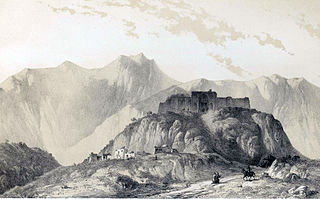 W
WThe Safavid Caravanserai of Bisotun is a caravanserai located in Bisotun in Kermanshah Province, Iran. This caravanserai was listed as an Iranian national heritage on August 4, 1974. The caravanserai of Bisotun was constructed by order of Shah Abbas I. There is an inscription from Shah Suleiman.
 W
WSafavid Government Institutions is a book about the Safavid Empire, published by Mazda Publishers, with Willem Floor as author. It contains the first detailed account of the state and army institutions and offices of the Safavid Empire.
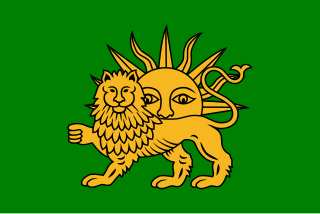 W
WSafavid Iran or Safavid Persia, also referred to as the Safavid Empire, was one of the greatest Iranian empires after the 7th-century Muslim conquest of Persia, ruled from 1501 to 1736 by the Safavid dynasty. It is often considered the beginning of modern Iranian history, as well as one of the gunpowder empires. The Safavid shahs established the Twelver school of Shia Islam as the official religion of the empire, marking one of the most important turning points in Muslim history.
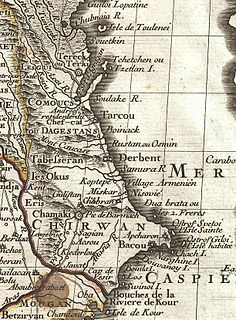 W
WThe Shirvan province was a velayat (province) founded by the Safavid Empire on the territory of modern Azerbaijan and Russia (Dagestan) between 1501 and 1736 with its capital in the town of Shamakhi.
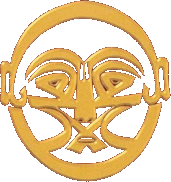 W
WThe Şahkulu rebellion was a widespread pro-Shia and pro-Safavid uprising in Anatolia, directed against the Ottoman Empire, in 1511. It began among the Turkmen tribes of the Taurus mountains, before spreading to a wide variety of disgruntled groups. It is named after the leader of the rebels, Şahkulu. His death in battle also meant the end of the uprising.
 W
WThe Isfahan School is a school of Islamic philosophy. It was founded by Mir Damad and reached its fullest development in the work of Mulla Sadra. The name was coined by Seyyed Hossein Nasr and Henry Corbin.
 W
WThe Sophy, also spelled Sofi, Sophie, Sophi, or Soffi, was a reference to the ruler of the Safavid dynasty of Iran. Even though Iran remained known in the West by the exonym Persia, which had been coined in "the days of the ancient Greeks", from the time of king Abbas I, the ruler of the nation came to be known as the "Sophy", itself a corruption of the word "Safavi" - the dynasty to which Abbas I belonged.
 W
WThe region of Talish was a region of the Safavid Iran (1501–1736), loacated in the greater Talish, present-day divided between Iran and Azerbaijan countries. The territory of the region was principally made up of the two subordinate governorates of "Astara" and "Lankaran". The city of Astara was its administrative center, the base of Safavid power in the region.
 W
WTitles & Emoluments in Safavid Iran: A Third Manual of Safavid Administration is a book about the Safavid Empire, published by Mage Publishers, with Willem Floor as author. According to the book description it: "contains unique and important information on offices, ethnic attitudes and administrative developments in Iran's Safavid government". The book lists administrative jurisdictions with names and dates of each of its governors.
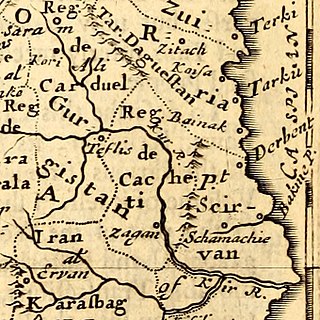 W
WZagem or Bazari was a town in the southeast Caucasus, in the eastern Georgian kingdom of Kakheti. It flourished from the 15th to the 17th century as a vibrant commercial and artisanal centre. In the 1550s, it became a dependency of the Karabakh–Ganja province of Safavid Iran. The fortunes of the town were reversed by Safavid military actions in the area in 1615. By the 1720s, the town had been reduced to an insignificant hamlet. The settlement was located in what is now the Zaqatala District of Azerbaijan, but no evidence of the town remains at the site. The toponym Zagem is found exclusively in non-Georgian sources; Georgians knew it as Bazari, meaning "bazaar".